Abstract
1. The experiments were performed on the soleus muscle of the anaesthetized cat in which the ventral roots had been cut.
2. A short period of repetitive stimulation of a single fusimotor fibre which influenced a particular spindle primary ending invariably caused a characteristic alteration in the response of the same ending to a subsequently applied ramp stretch of the muscle. The change consisted in the appearance of a burst of impulses at the beginning of the stretch where none had been present before. Occasionally, such an `initial burst' was spontaneously present; it was then enhanced following fusimotor stimulation.
3. This after-effect of fusimotor stimulation was abolished by a subsequent stretch of the muscle, but otherwise persisted for over a minute.
4. When the muscle was released to below the length at which the spindle had been facilitated and a testing stretch applied from the new initial length there was no burst of impulses at the beginning of stretch. There was, however, a burst as the muscle was stretched through the length at which the fusimotor fibre had been stimulated.
5. These effects are suggested to be due to the persistence of stable bonds between the actin and myosin filaments of the intrafusal fibres, so that their previously activated regions were `stuck' at the length they were when the fusimotor stimulation was applied.
6. Such effects were produced both by static and by dynamic fusimotor fibres. The effects of the two kinds of fusimotor fibre, however, appeared to be mediated by different intrafusal muscle fibres. This was shown by stimulating one kind of fibre with the muscle slightly stretched, then releasing the muscle a few mm and stimulating the other kind of fibre to the same spindle. A subsequent testing stretch then elicited two bursts, one at the beginning and one in the middle of the stretch.
Full text
PDF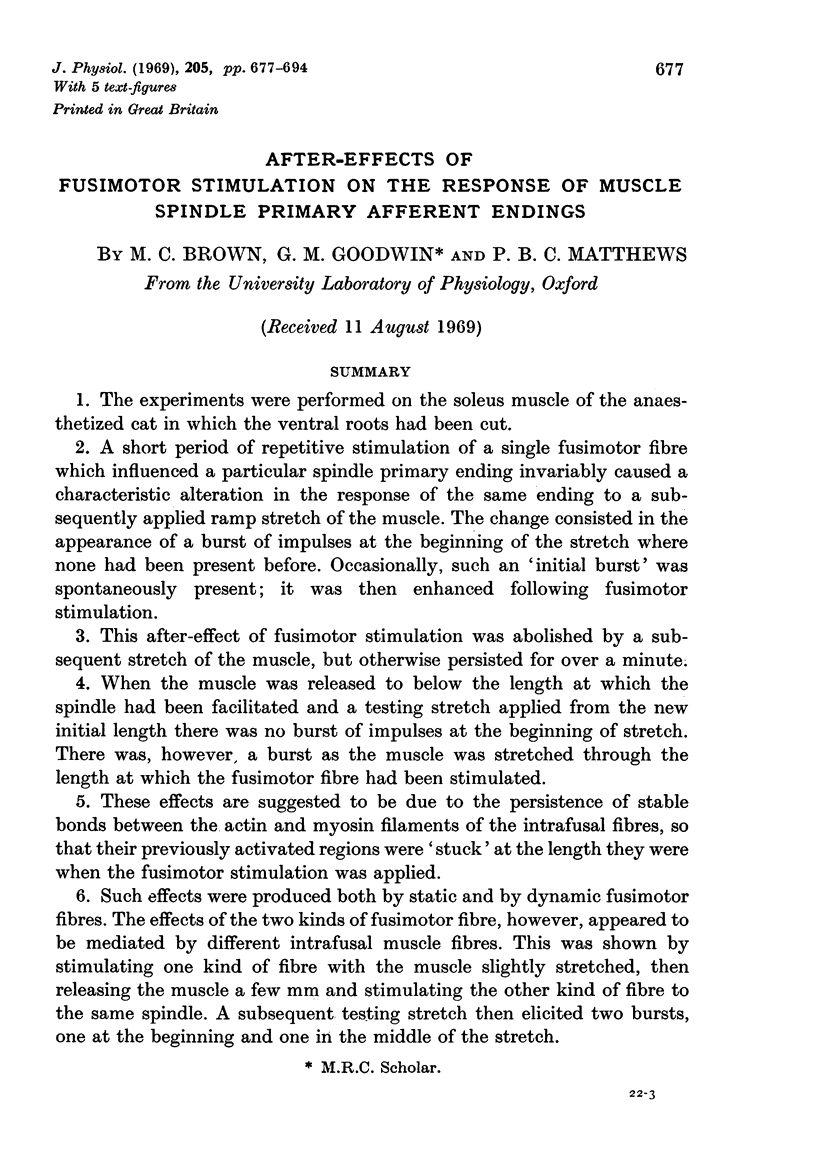
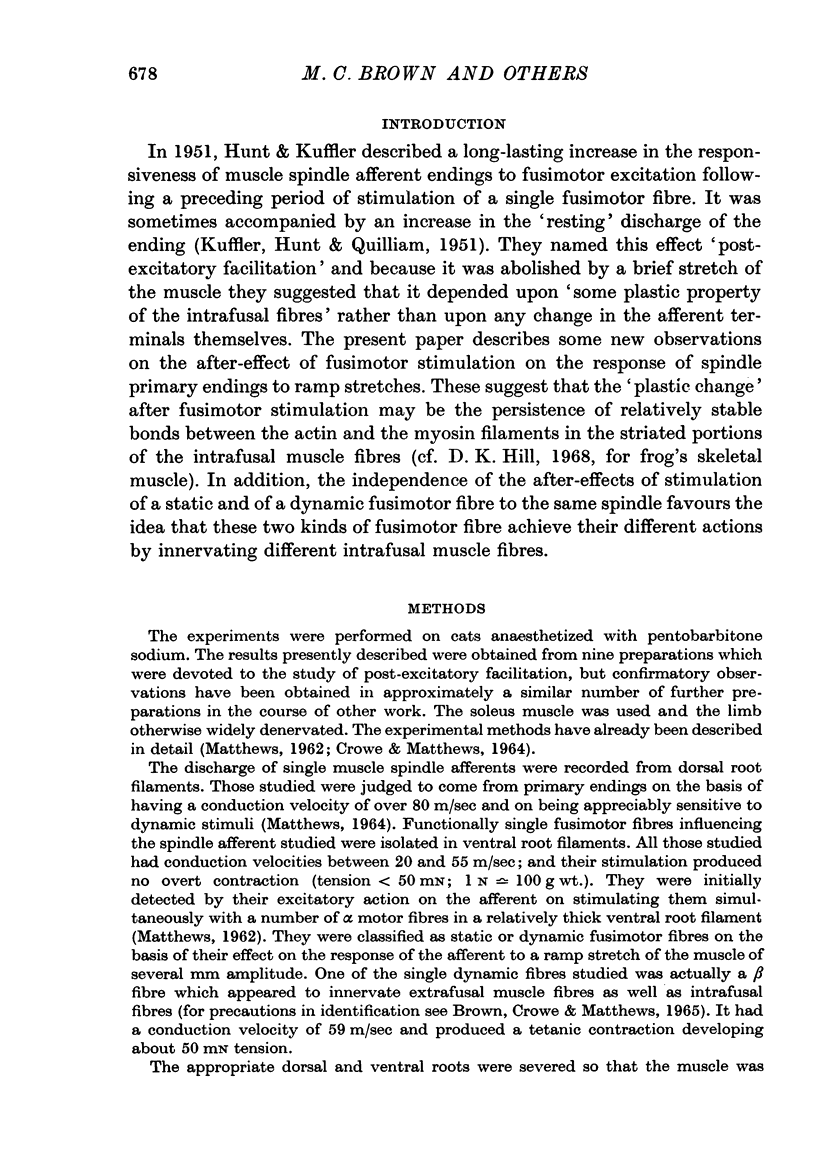
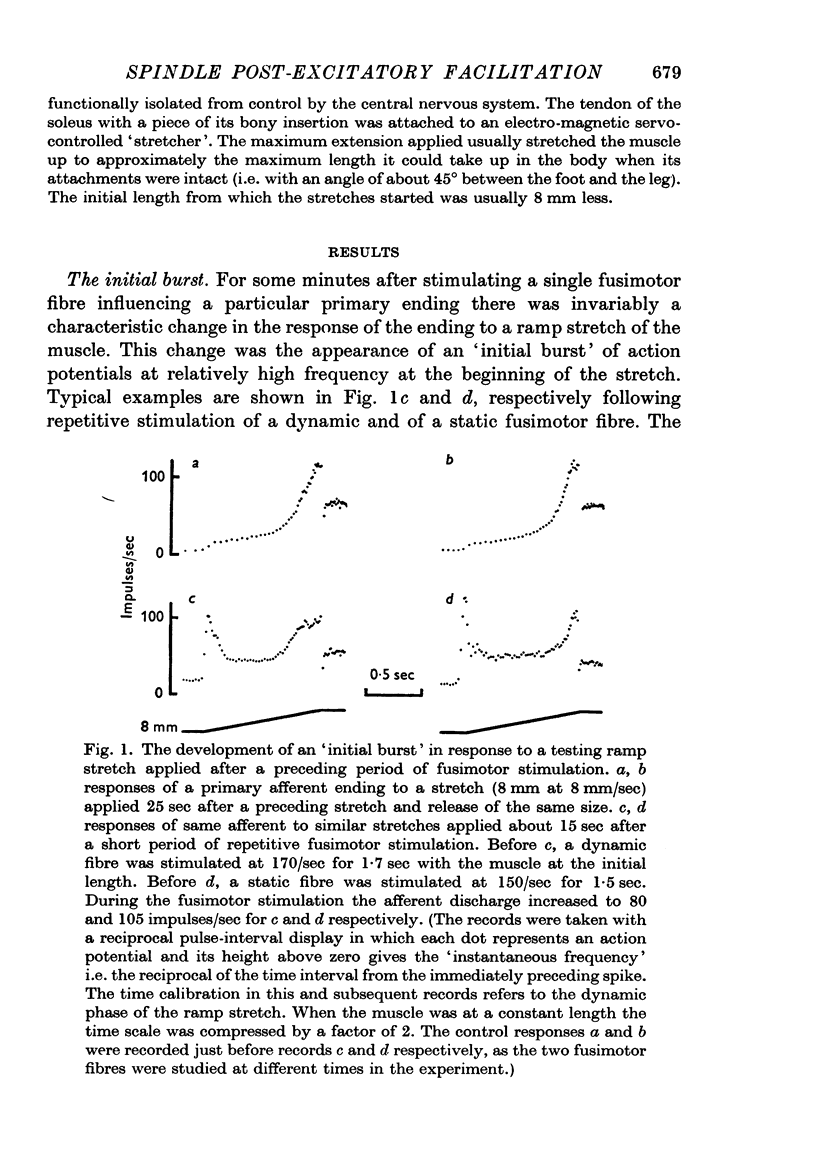
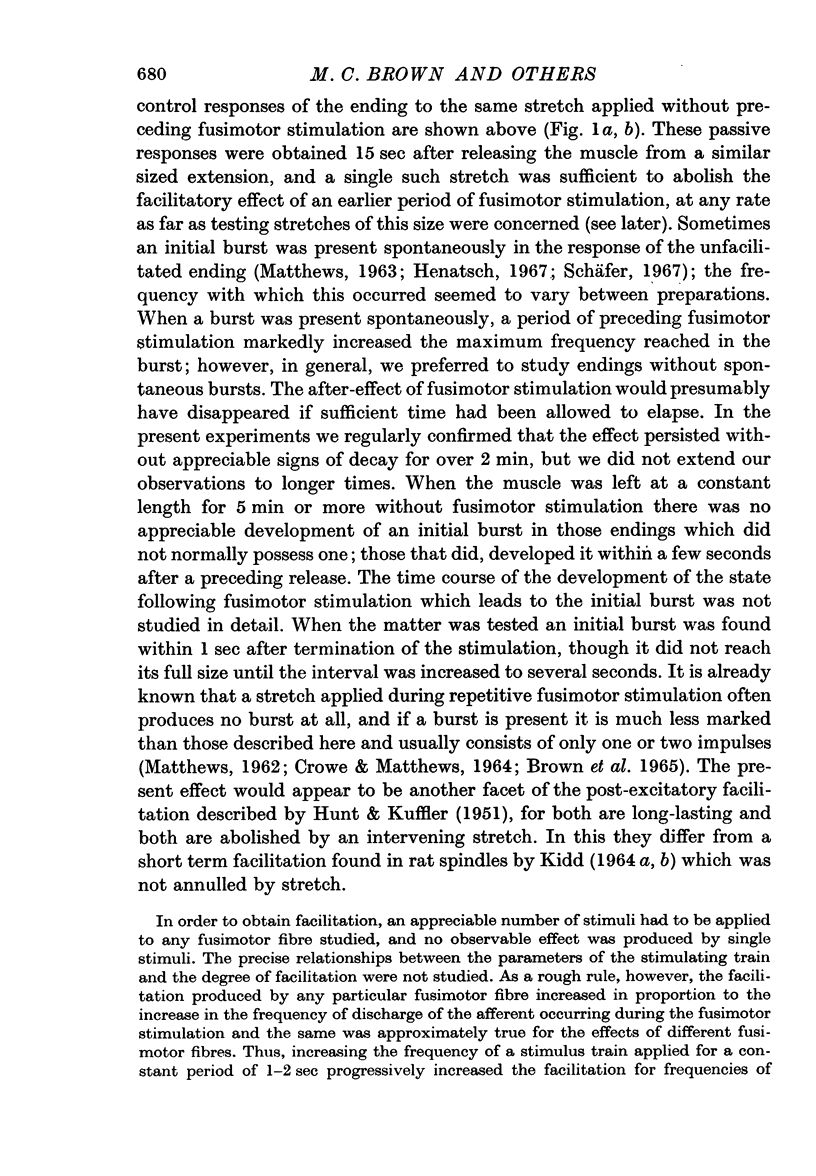
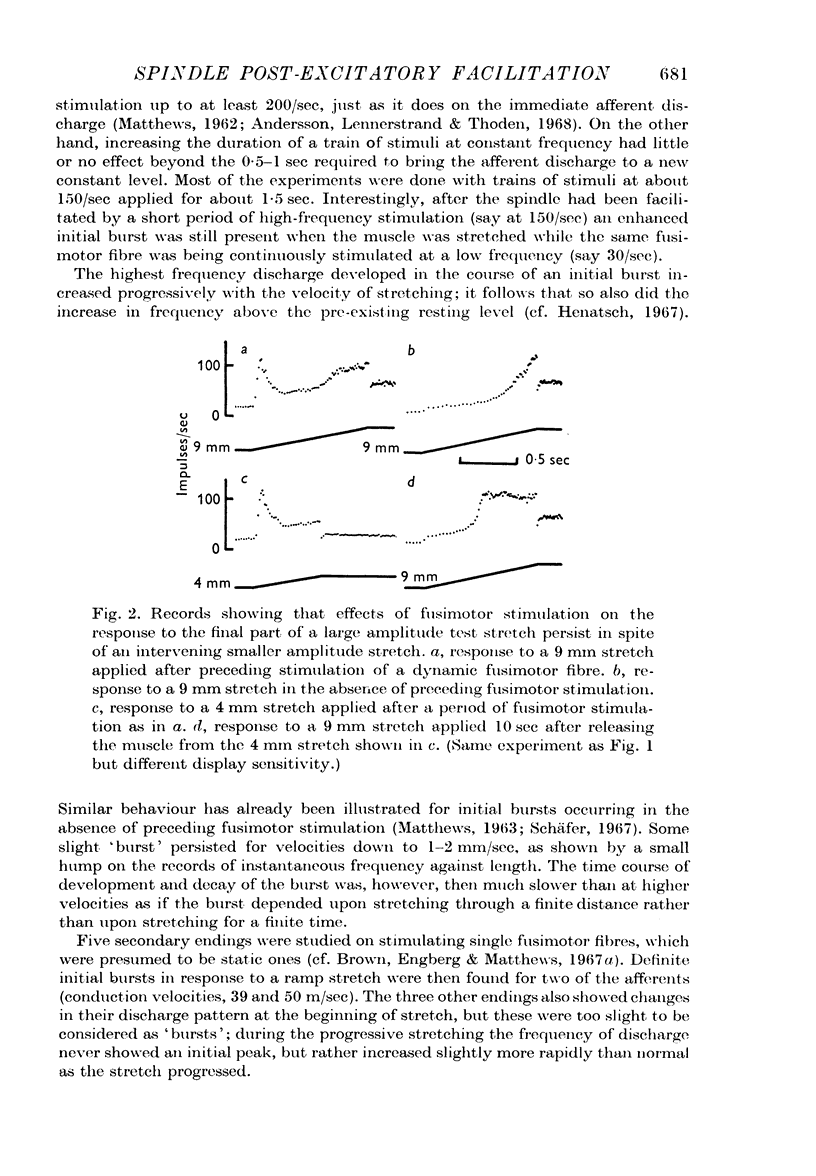
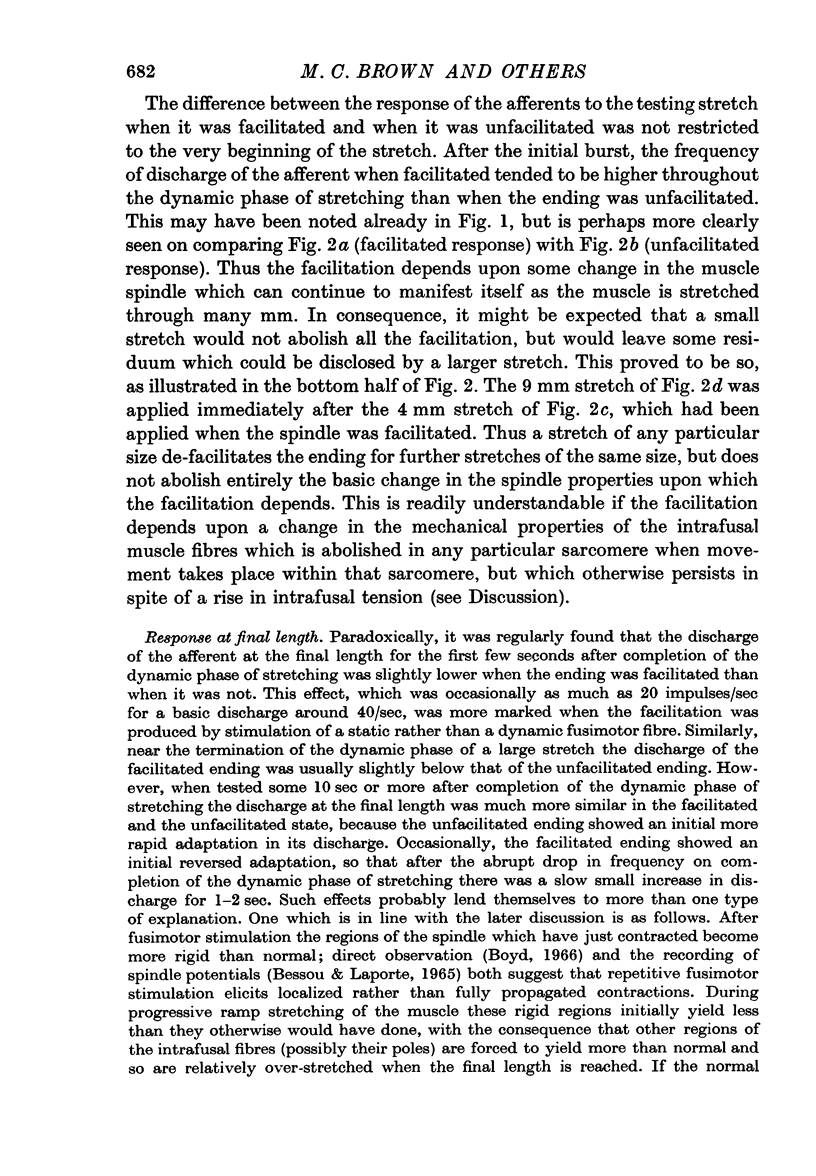
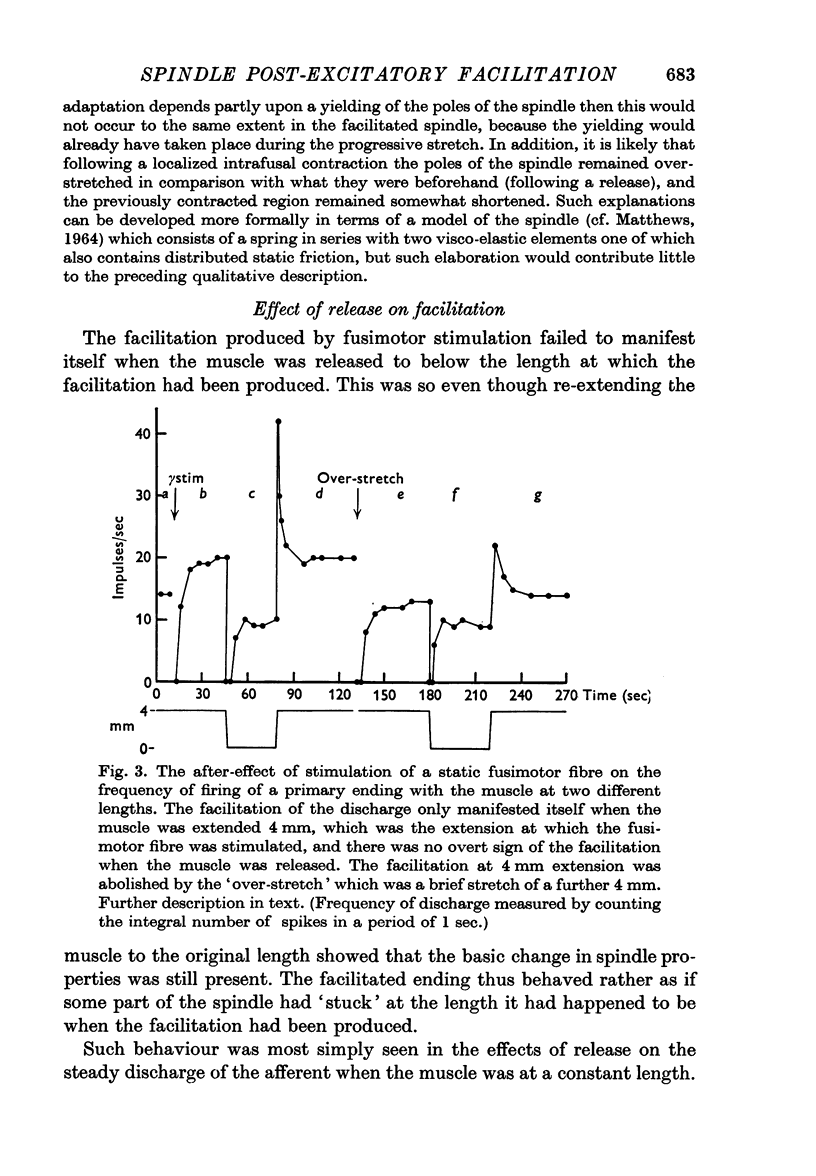
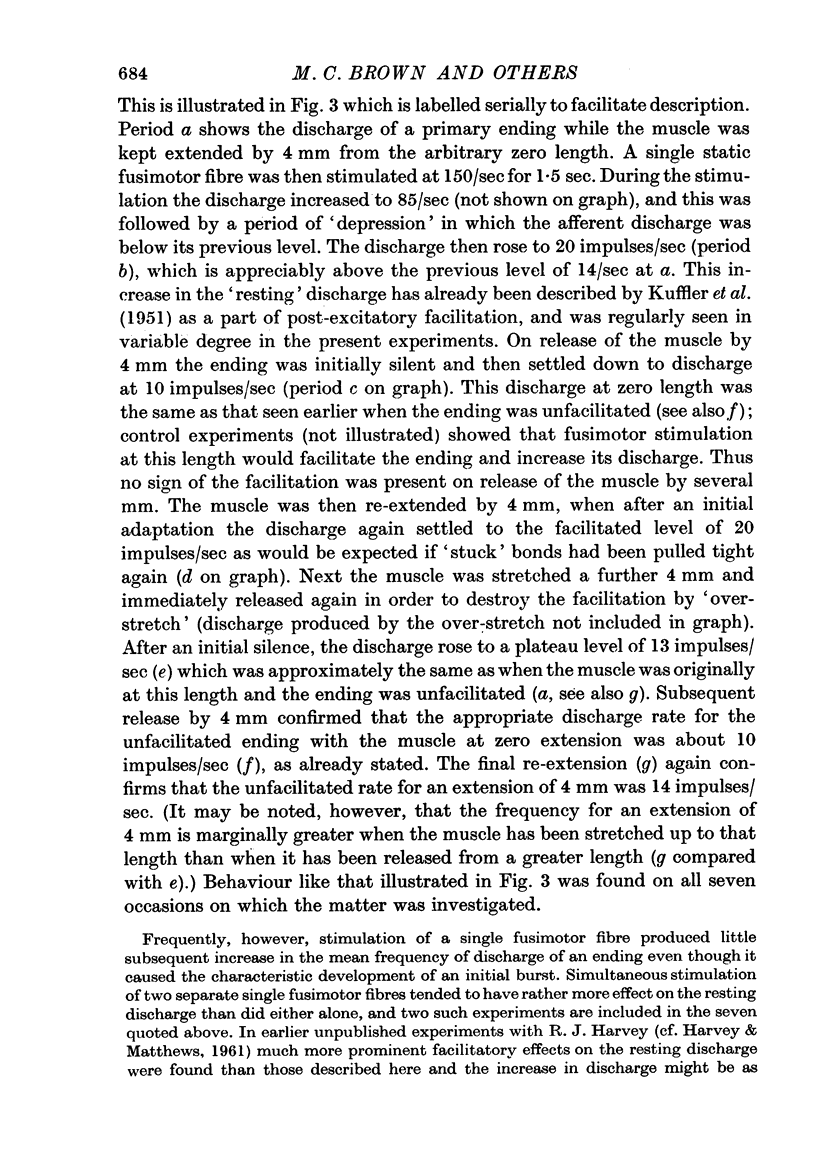
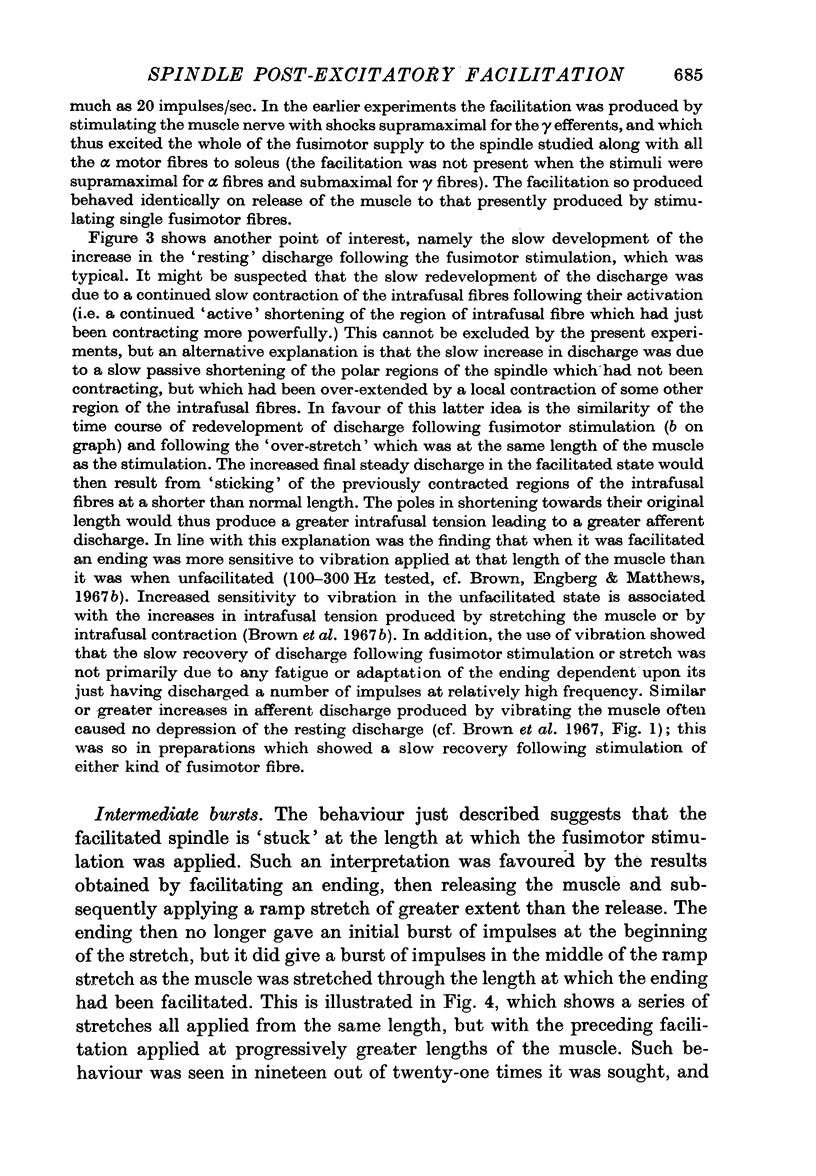
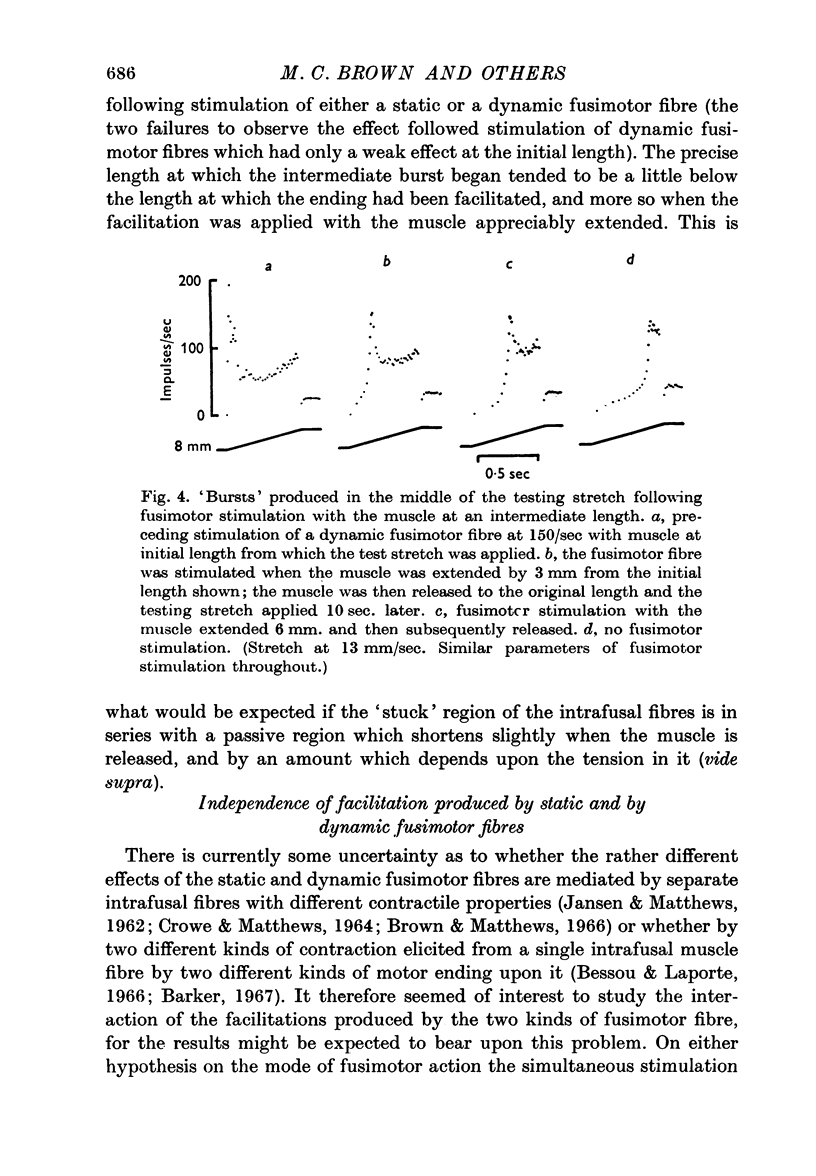
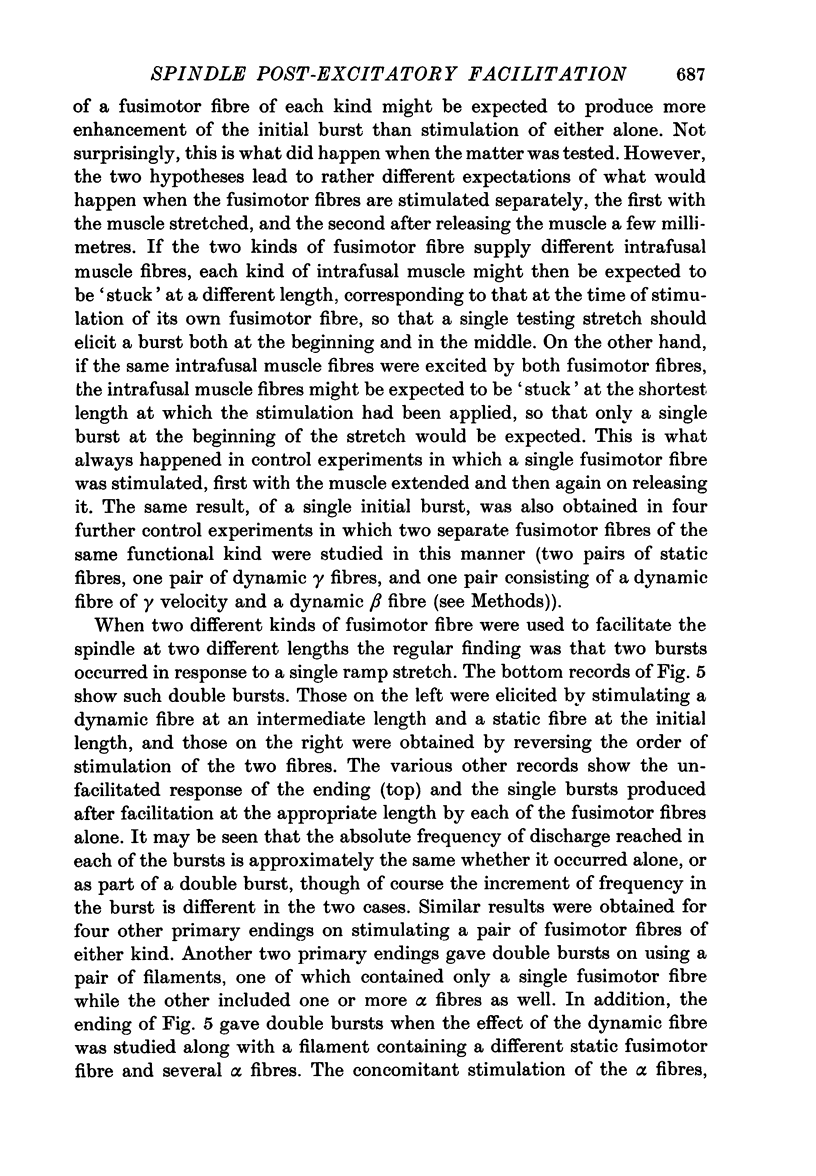
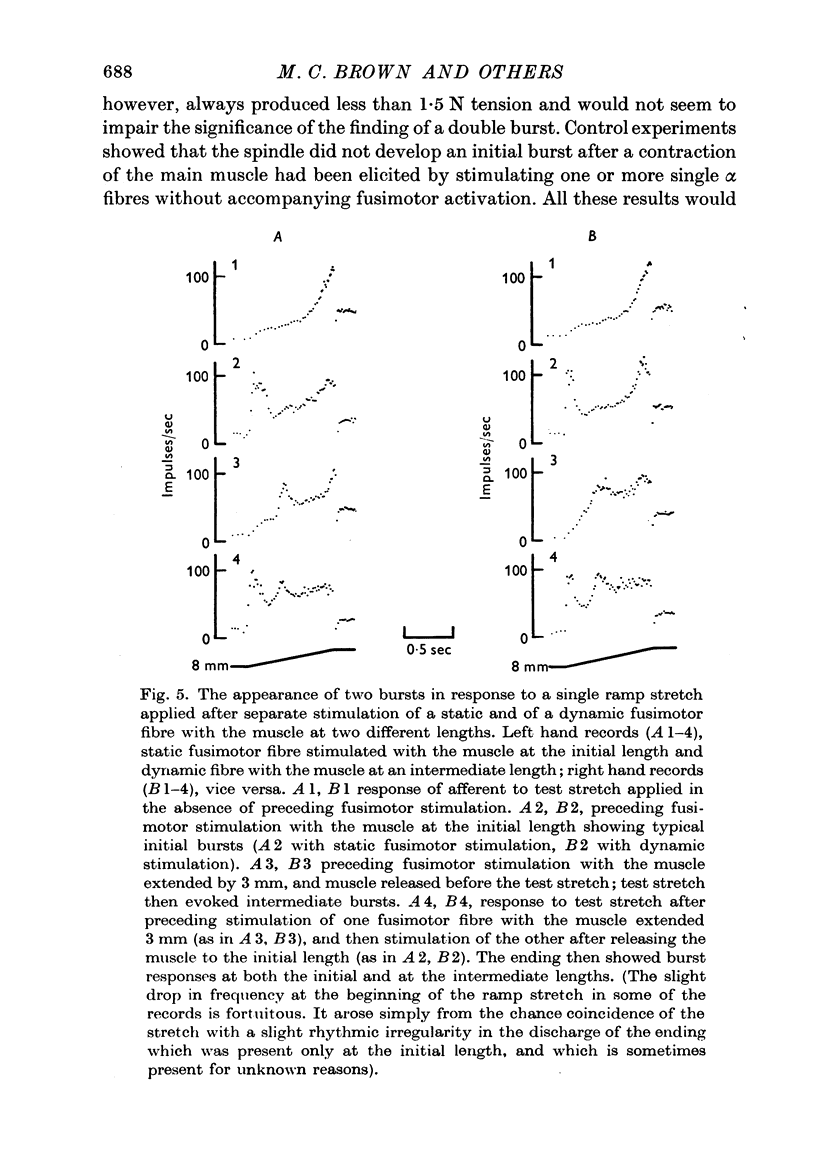
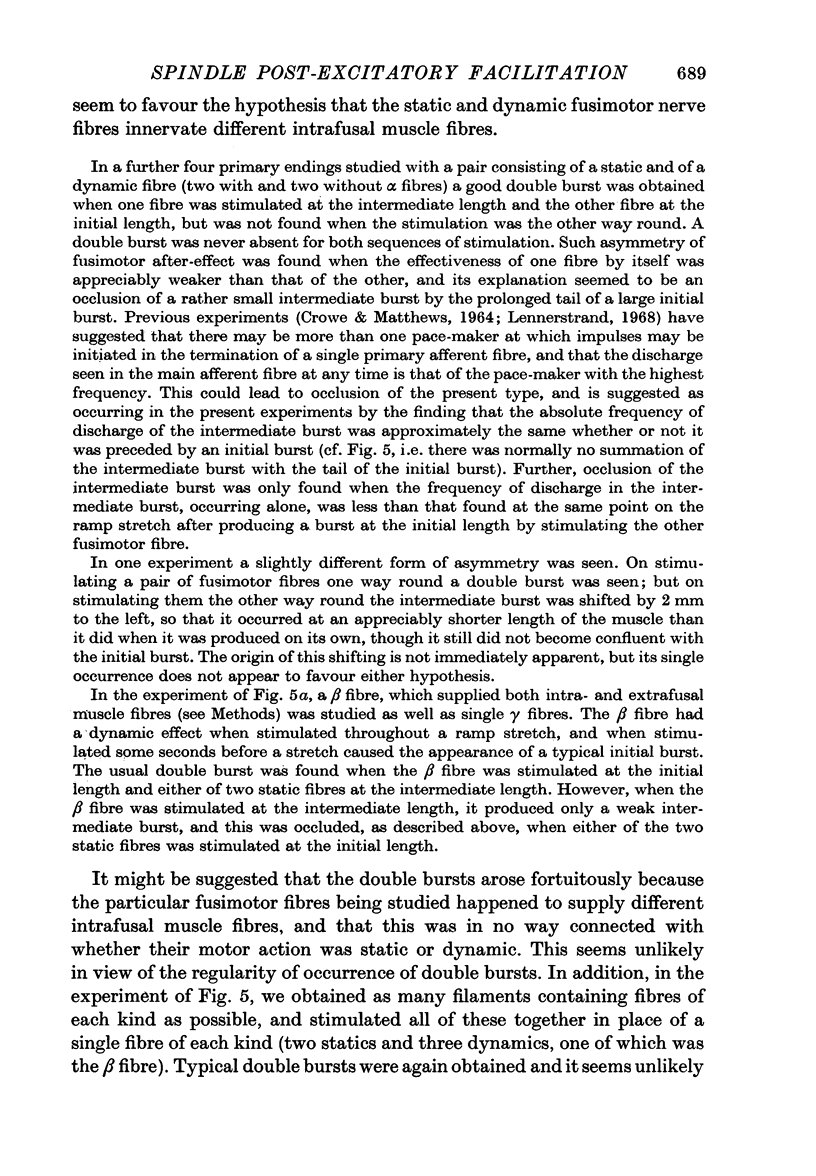
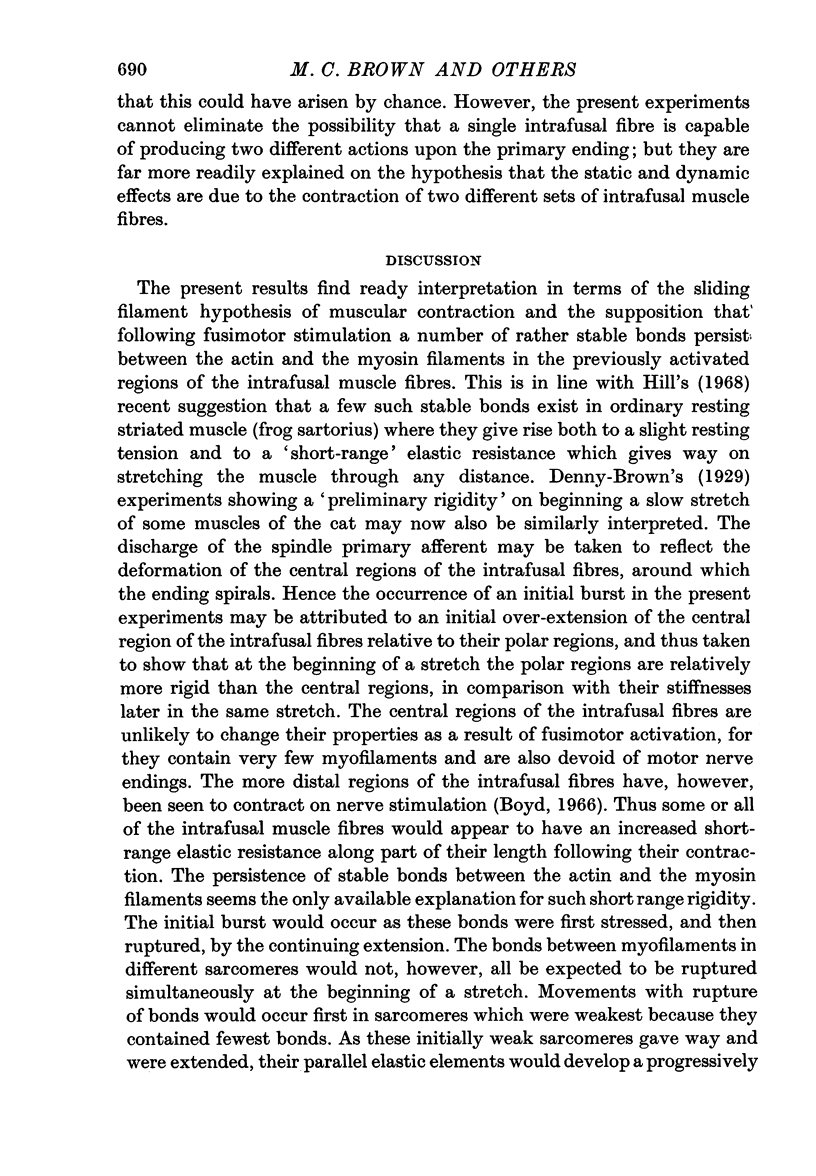
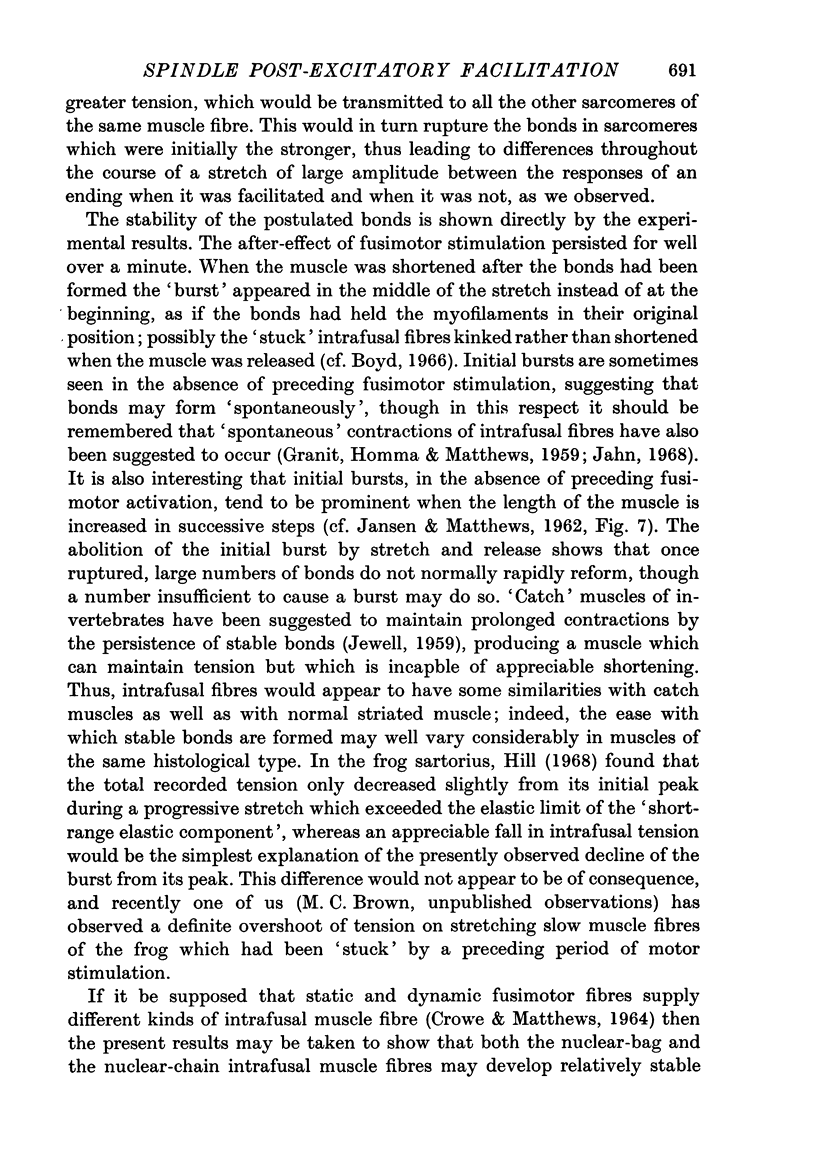
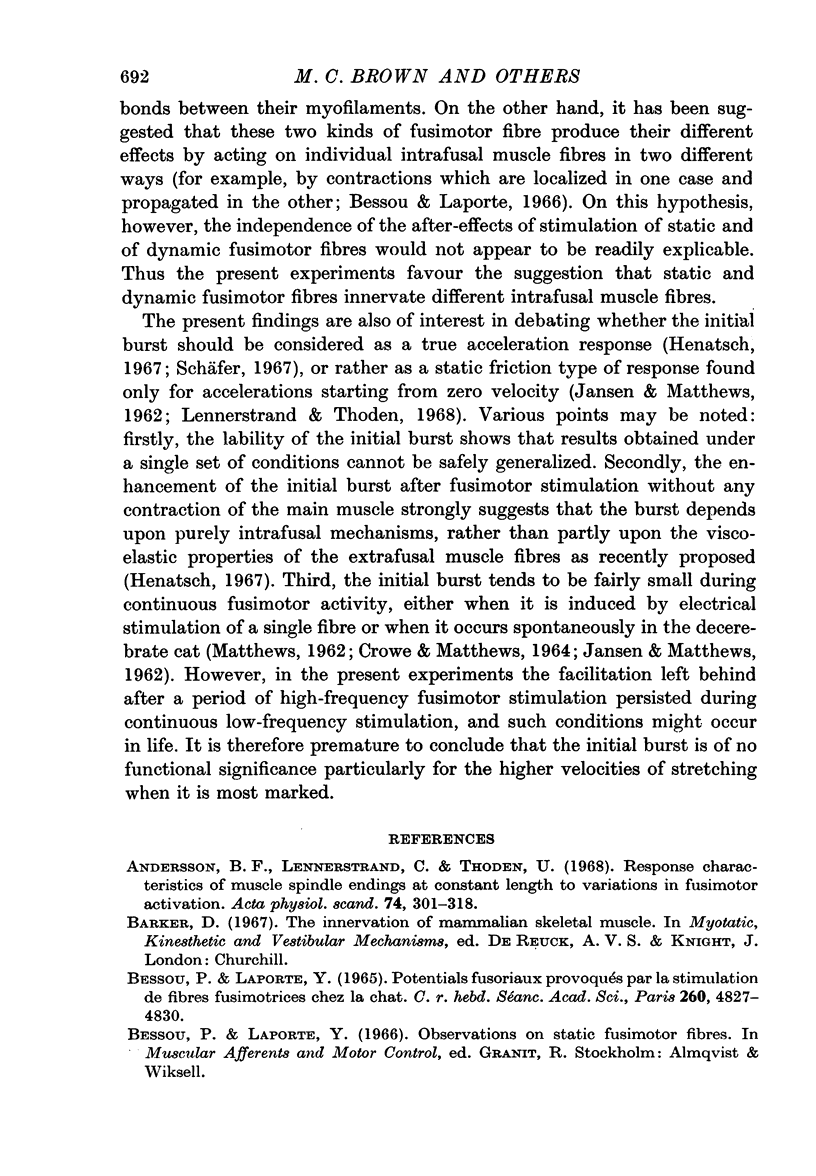
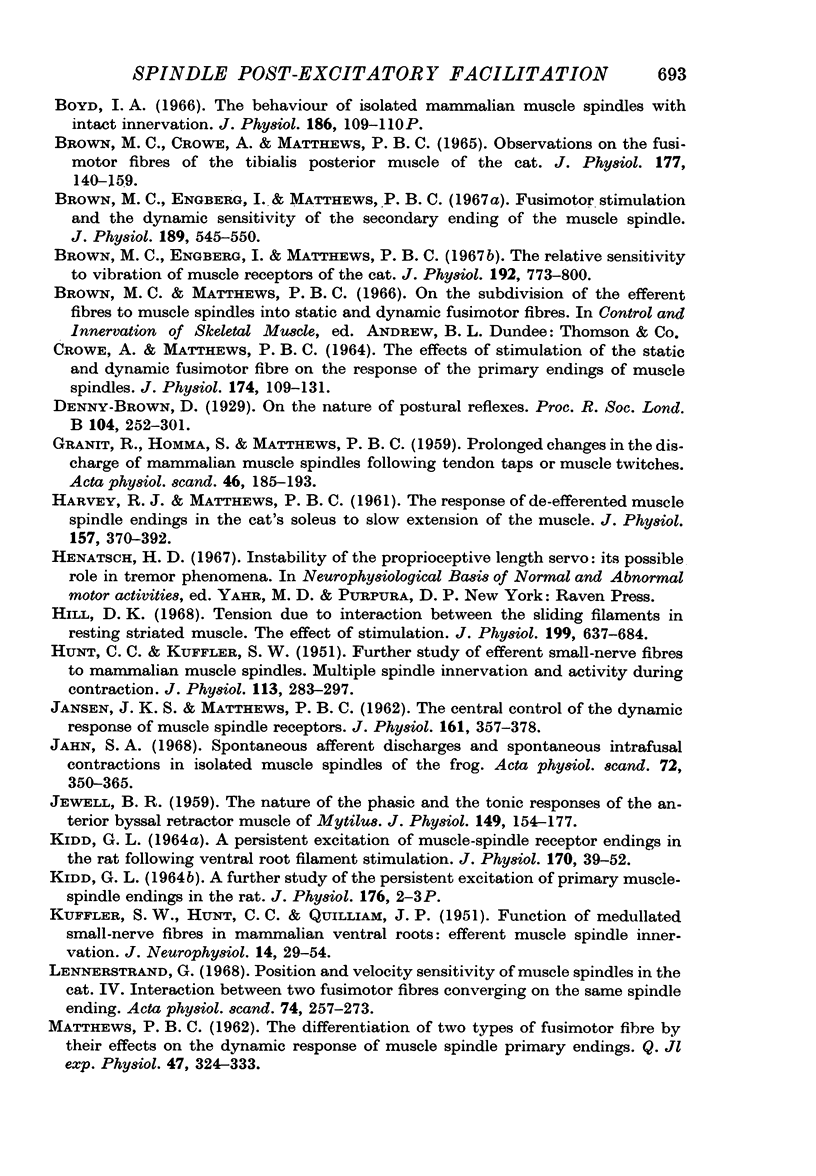
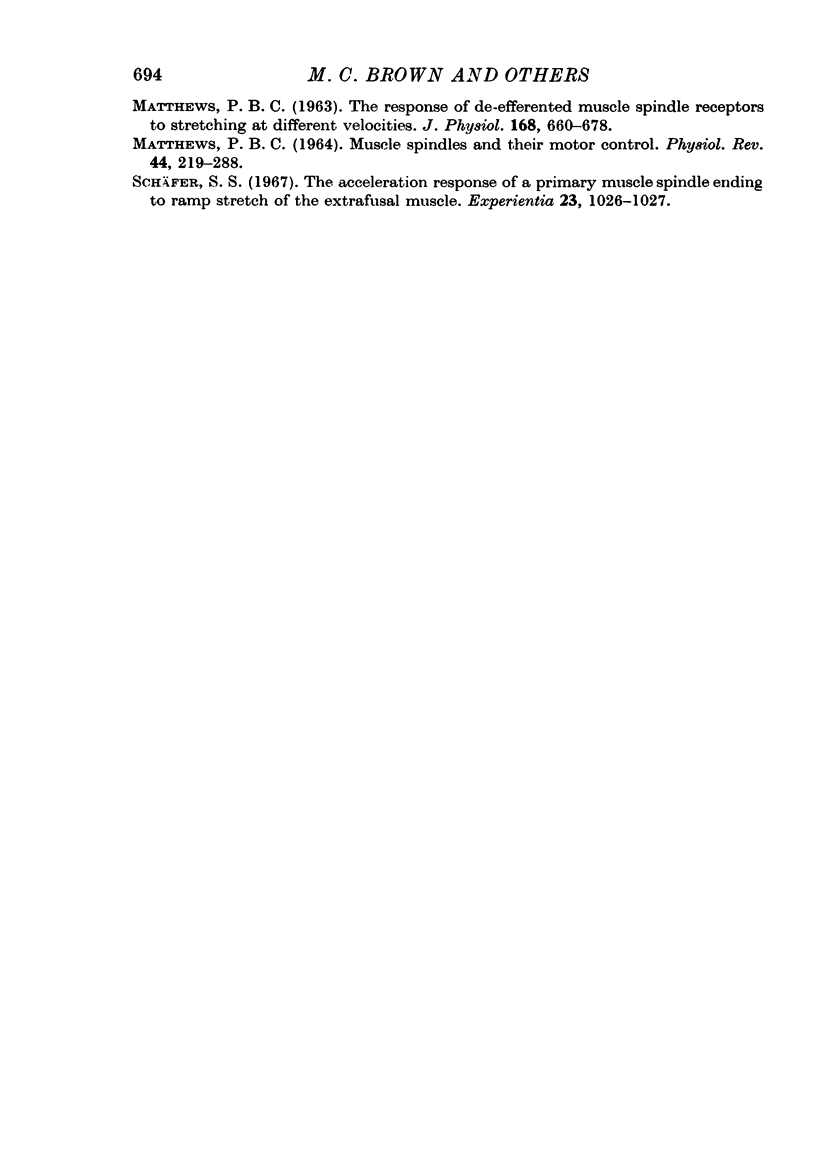
Selected References
These references are in PubMed. This may not be the complete list of references from this article.
- Andersson B. F., Lennerstrand G., Thoden U. Response characteristics of muscle spindle endings at constant length to variations in fusimotor activation. Acta Physiol Scand. 1968 Nov;74(3):301–318. doi: 10.1111/j.1748-1716.1968.tb04238.x. [DOI] [PubMed] [Google Scholar]
- BROWN M. C., CROWE A., MATTHEWS P. B. OBSERVATIONS ON THE FUSIMOTOR FIBRES OF THE TIBIALIS POSTERIOR MUSCLE OF THE CAT. J Physiol. 1965 Mar;177:140–159. doi: 10.1113/jphysiol.1965.sp007582. [DOI] [PMC free article] [PubMed] [Google Scholar]
- Bessou P., Laporte Y. Potentiels fusoriaux provoqués par la stimulation de fibres fusimotrices chez le chat. C R Acad Sci Hebd Seances Acad Sci D. 1965 May 3;260(18):4827–4830. [PubMed] [Google Scholar]
- Brown M. C., Engberg I., Matthews P. B. Fusimotor stimulation and the dynamic sensitivity of the secondary ending of the muscle spindle. J Physiol. 1967 Apr;189(3):545–550. doi: 10.1113/jphysiol.1967.sp008184. [DOI] [PMC free article] [PubMed] [Google Scholar]
- Brown M. C., Engberg I., Matthews P. B. The relative sensitivity to vibration of muscle receptors of the cat. J Physiol. 1967 Oct;192(3):773–800. doi: 10.1113/jphysiol.1967.sp008330. [DOI] [PMC free article] [PubMed] [Google Scholar]
- CROWE A., MATTHEWS P. B. THE EFFECTS OF STIMULATION OF STATIC AND DYNAMIC FUSIMOTOR FIBRES ON THE RESPONSE TO STRETCHING OF THE PRIMARY ENDINGS OF MUSCLE SPINDLES. J Physiol. 1964 Oct;174:109–131. doi: 10.1113/jphysiol.1964.sp007476. [DOI] [PMC free article] [PubMed] [Google Scholar]
- GRANIT R., HOMMA S., MATTHEWS P. B. Prolonged changes in the discharge of mammalian muscle spindles following tendon taps or muscle twitches. Acta Physiol Scand. 1959 Jun 24;46:185–193. doi: 10.1111/j.1748-1716.1959.tb01747.x. [DOI] [PubMed] [Google Scholar]
- HARVEY R. J., MATTHEWS P. B. The response of de-efferented muscle spindle endings in the cat's soleus to slow extension of the muscle. J Physiol. 1961 Jul;157:370–392. doi: 10.1113/jphysiol.1961.sp006729. [DOI] [PMC free article] [PubMed] [Google Scholar]
- HUNT C. C., KUFFLER S. W. Further study of efferent small-nerve fibers to mammalian muscle spindles; multiple spindle innervation and activity during contraction. J Physiol. 1951 Apr;113(2-3):283–297. doi: 10.1113/jphysiol.1951.sp004572. [DOI] [PMC free article] [PubMed] [Google Scholar]
- Hill D. K. Tension due to interaction between the sliding filaments in resting striated muscle. The effect of stimulation. J Physiol. 1968 Dec;199(3):637–684. doi: 10.1113/jphysiol.1968.sp008672. [DOI] [PMC free article] [PubMed] [Google Scholar]
- JANSEN J. K., MATTHEWS P. B. The central control of the dynamic response of muscle spindle receptors. J Physiol. 1962 May;161:357–378. doi: 10.1113/jphysiol.1962.sp006892. [DOI] [PMC free article] [PubMed] [Google Scholar]
- JEWELL B. R. The nature of the phasic and the tonic responses of the anterior byssal retractor muscle of Mytilus. J Physiol. 1959 Dec;149:154–177. doi: 10.1113/jphysiol.1959.sp006332. [DOI] [PMC free article] [PubMed] [Google Scholar]
- Jahn S. A. Spontaneous afferent discharges and spontaneous intrafusal contractions in isolated muscle spindles of the frog. Acta Physiol Scand. 1968 Mar;72(3):350–365. doi: 10.1111/j.1748-1716.1968.tb03857.x. [DOI] [PubMed] [Google Scholar]
- KIDD G. L. A PERSISTENT EXCITATION OF MUSCLE-SPINDLE RECEPTOR ENDINGS IN THE RAT FOLLOWING VENTRAL ROOT FILAMENT STIMULATION. J Physiol. 1964 Jan;170:39–52. doi: 10.1113/jphysiol.1964.sp007312. [DOI] [PMC free article] [PubMed] [Google Scholar]
- KUFFLER S. W., HUNT C. C., QUILLIAM J. P. Function of medullated small-nerve fibers in mammalian ventral roots; efferent muscle spindle innervation. J Neurophysiol. 1951 Jan;14(1):29–54. doi: 10.1152/jn.1951.14.1.29. [DOI] [PubMed] [Google Scholar]
- Lennerstrand G. Position and velocity sensitivity of muscle spindles in the cat. IV. Interaction between two fusimotor fibres converging on the same spindle ending. Acta Physiol Scand. 1968 Nov;74(3):257–273. doi: 10.1111/j.1748-1716.1968.tb04235.x. [DOI] [PubMed] [Google Scholar]
- MATTHEWS P. B. MUSCLE SPINDLES AND THEIR MOTOR CONTROL. Physiol Rev. 1964 Apr;44:219–288. doi: 10.1152/physrev.1964.44.2.219. [DOI] [PubMed] [Google Scholar]
- MATTHEWS P. B. THE RESPONSE OF DE-EFFERENTED MUSCLE SPINDLE RECEPTORS TO STRETCHING AT DIFFERENT VELOCITIES. J Physiol. 1963 Oct;168:660–678. doi: 10.1113/jphysiol.1963.sp007214. [DOI] [PMC free article] [PubMed] [Google Scholar]
- MATTHEWS P. B. The differentiation of two types of fusimotor fibre by their effects on the dynamic response of muscle spindle primary endings. Q J Exp Physiol Cogn Med Sci. 1962 Oct;47:324–333. doi: 10.1113/expphysiol.1962.sp001616. [DOI] [PubMed] [Google Scholar]
- Schäfer S. S. The acceleration response of a primary muscle-spindle ending to ramp stretch of the extrafusal muscle. Experientia. 1967 Dec 15;23(12):1026–1027. doi: 10.1007/BF02136428. [DOI] [PubMed] [Google Scholar]


